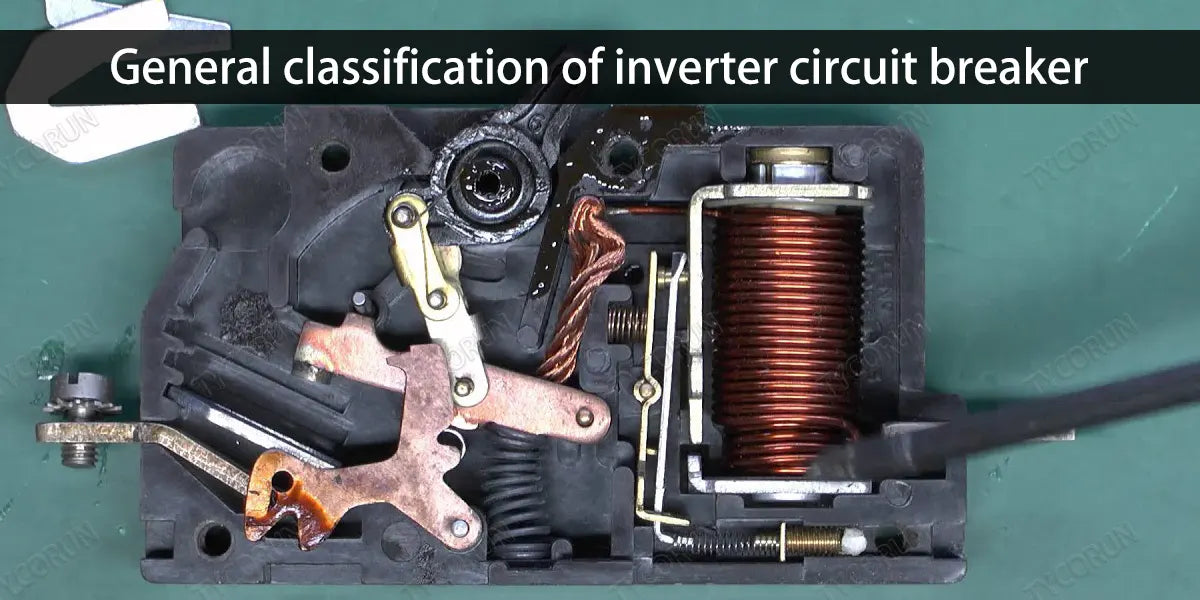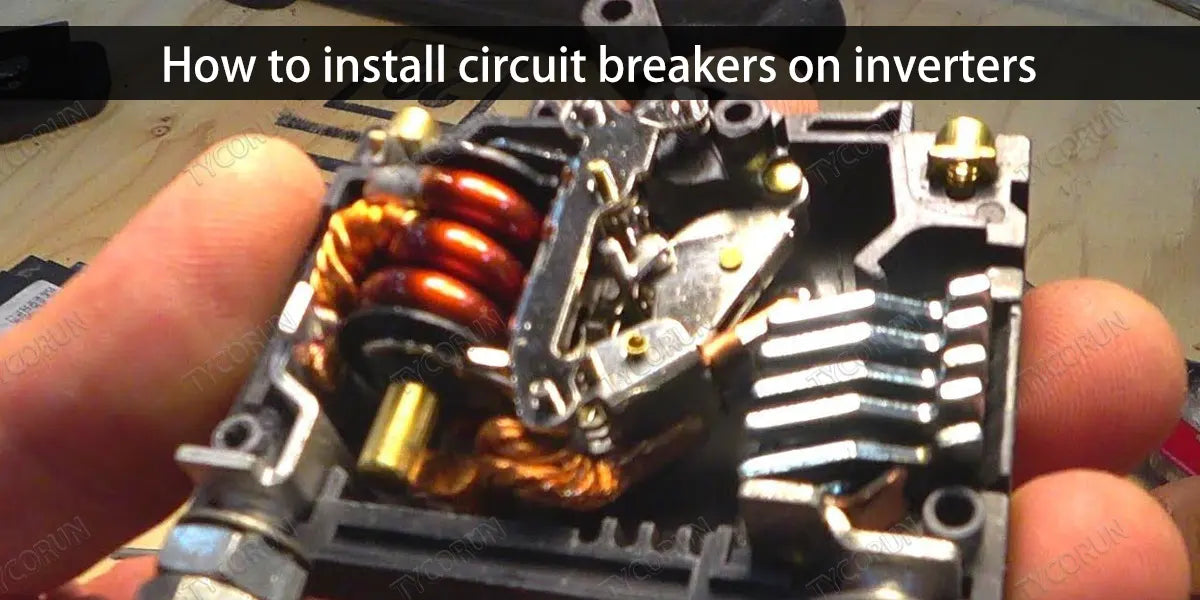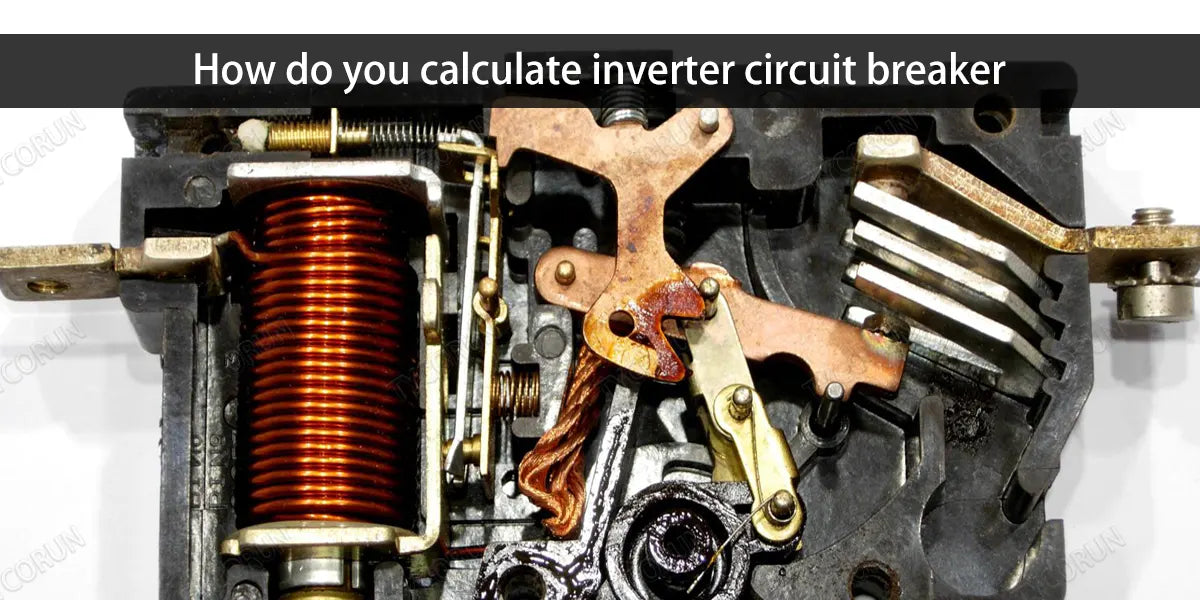
Main content:
1. What is a circuit breaker
A circuit breaker is a switching device that can carry and break current under normal or abnormal circuit conditions. The circuit breaker protects the circuit from overload or short-circuit damage. This article is about inverter circuit breaker.
At the same time, the circuit breaker also has an arc extinguishing device, which can effectively extinguish the arc generated when the current is broken.
2. General classification of inverter circuit breaker
Circuit breakers can be classified in a variety of ways:
- Scope of use
It can be divided into high-voltage circuit breakers and low-voltage circuit breakers, which are generally considered to be high-voltage circuit breakers above 3 kV and low-voltage circuit breakers below 1 kV.
- Arc extinguishing medium: oil-immersed, sulfur hexafluoride, vacuum, air and other types.
- Operation mode: electric operation, energy storage operation and manual operation.
- Structure: universal type and plastic shell type and other types.
- Speed of action: It can be divided into fast type and ordinary type.
- Use category: can be divided into selected and non-selected types.

Even if there is a inverter circuit breaker, do not overload the inverter. Ensure that the inverter and other parts of the electrical system are running smoothly and without overload.
3. How to install circuit breakers on inverters
If your home uses solar power, you can easily connect the inverter breaker to the inverter. It is assumed that you have some experience installing electrical components. If dealing with these wires is not convenient, go to the inverter store and consult a professional.
- First step
Turn off the main power supply of the inverter circuit breaker. Also, turn off the inverter power button. If not already, turn off and disconnect any appliances or loads on the inverter.
- Second step
Remove screws from the inverter circuit breaker board. Remove the inverter circuit breaker you want to plug into the inverter. Remove the panel side cover with a screwdriver.
- Third step
Connect the cable to the inverter output. If you are using a 2000 watt inverter, use 2/0 AWG wire. Other inverter models require different wires, so check the instructions.
- Step four
Press the multimeter pen on the bus bar. If you turn off the main power, there will be no voltage. If yes, check the main power supply of the inverter circuit breaker.
- Fifth step
Remove half an inch of insulation from the cable connecting the inverter circuit breaker to the inverter. Use a screwdriver to secure the cable to the neutral ground bar of the inverter circuit breaker.

- Step six
Check the inverter circuit breaker rear panel. Locate the inverter circuit breaker of your choice and connect the wires. If you follow the above steps, the inverter will run. However, if the inverter circuit breaker does not work or the system displays an error message, check the wiring, as something may be loose.
- Step seven
Put the breaker panel back on and turn the switch on. Power on the inverter. Run a test to see if the system is working properly.
Regarding the steps for installing inverter circuit breakers on inverters, turn off all contents of the main power supply of inverter circuit breakers. Pure sine wave inverters are an integral part of home energy storage.
4. The difference between inverter fuse and inverter circuit breaker
Fuses and circuit breakers have the same purpose, protecting the wires from overheating. Without a fuse or inverter circuit breaker, wires can overheat and start a fire. Which is better, fuse or inverter inverter circuit breaker?
- Inverter fuse
Fuses are cheaper and easier to install. However, you can only use it once. inverter circuit breakers cost more, but you can reuse them and have more capacity. A fuse consists of a wire wrapped in glass.
If the inverter suddenly surges, the fuse box will break. If the temperature is high enough, the wires will melt. However, the circuit will be disconnected. If your inverter blows a fuse, you must replace it with a higher capacity one to cope with the voltage.
- Inverter circuit breaker
The inverter circuit breaker does the same thing, disconnecting the inverter from the main power supply in case of overload. However, the inverter circuit breaker allows the current to flow from the lower terminal to the higher terminal to a band.

If the current is above the safety threshold, the inverter breaker stops the current. Unlike fuses, inverter circuit breakers do not melt or explode. You can reset the circuit breaker and use it again. So which is better?
Inverter circuit breakers are more expensive than fuses, but more effective. Unlike a fuse, you don't need to buy a new one every time the voltage suddenly rises.
Whether you are using a fuse or an inverter circuit breaker, make sure the inverter cable size is correct. If you blow a fuse or the circuit breaker fails, find out what caused it. Resetting an inverter circuit breaker or replacing a fuse is just one step. Check the PV inverter for damage or problems.
5. How do you calculate inverter circuit breaker
- In terms of voltage.
The calculation is simple. Whether you are running an inverter on 120 volts AC or a 12V/24V battery pack, 2000 watts or inverter 3000w or other power, they are suitable.
Inverter current output x 1.25 = circuit breaker size
If you prefer fuses, use the following conversions:
Inverter current output x 1.75 = Fuse size
You can increase the fuse multiplier to 2.5, although the inverter should be able to reach 1.75. If you have a 2000 watt inverter voltage grid power inverter using 120 volts AC when its current output is 16.6 amps, you need a 25 amp circuit breaker.
First, we need to find the inverter current or amplifier output. We calculate this by dividing the load in watts by voltage. Use watt load, not inverter capacity. If you load 1500 watts of power into the inverter, use this power instead of 2000 watts.
2000/120 = 16.6
Now multiply this by 1.25 to get the size of the circuit breaker:
16.6 x 1.25 = 20.75
You might be able to use a 20A circuit breaker, but just to be on the safe side, use the next largest circuit breaker size which is 25A.

- More calculation
Now suppose you want to run an inverter with solar cells and batteries. The procedure is the same, but this time you are using the battery voltage, which can be 12V, 24V or 48V.
Content similar: How to calculate the inverter output load efficiency with this formula can be Most 2000W inverters use 24V, so assume you have:
2000/24 = 83.3
83.3 x 1.25 = 104.1
Round 104.1 amps to the nearest circuit breaker size 110A. If you have a 2000W 12V system, the process is similar.
2000/12 = 166.6
166.6 x 1.25 = 208.25
Round it up to the nearest size, which is 225 or 250A. Repeat these steps for any size inverter you want to use. If you have a 48V or 220V/230V electrical system, you can also use these same processes.
If you are looking for a 12V battery to pair with your inverter, we recommend the ampere time lithium iron phosphate deep cycle battery as it works well with these systems. 2000 12V Watt inverters require 250A circuit breakers and 2/0 AWG size wires.
You cannot use a smaller wire because the circuit breaker will carry too much current during a power surge and may damage the inverter. The above is how to calculate the inverter circuit breaker size, load divided by voltage to calculate the relevant content.
6. Conclusion
Inverter circuit breakers are used as DC protection, especially when the number of parallel strings exceeds 2 strings, and play a great role as overcurrent protection devices.
Related articles: top 10 PV inverter companies, off grid solar batteries, car inverter near me
















